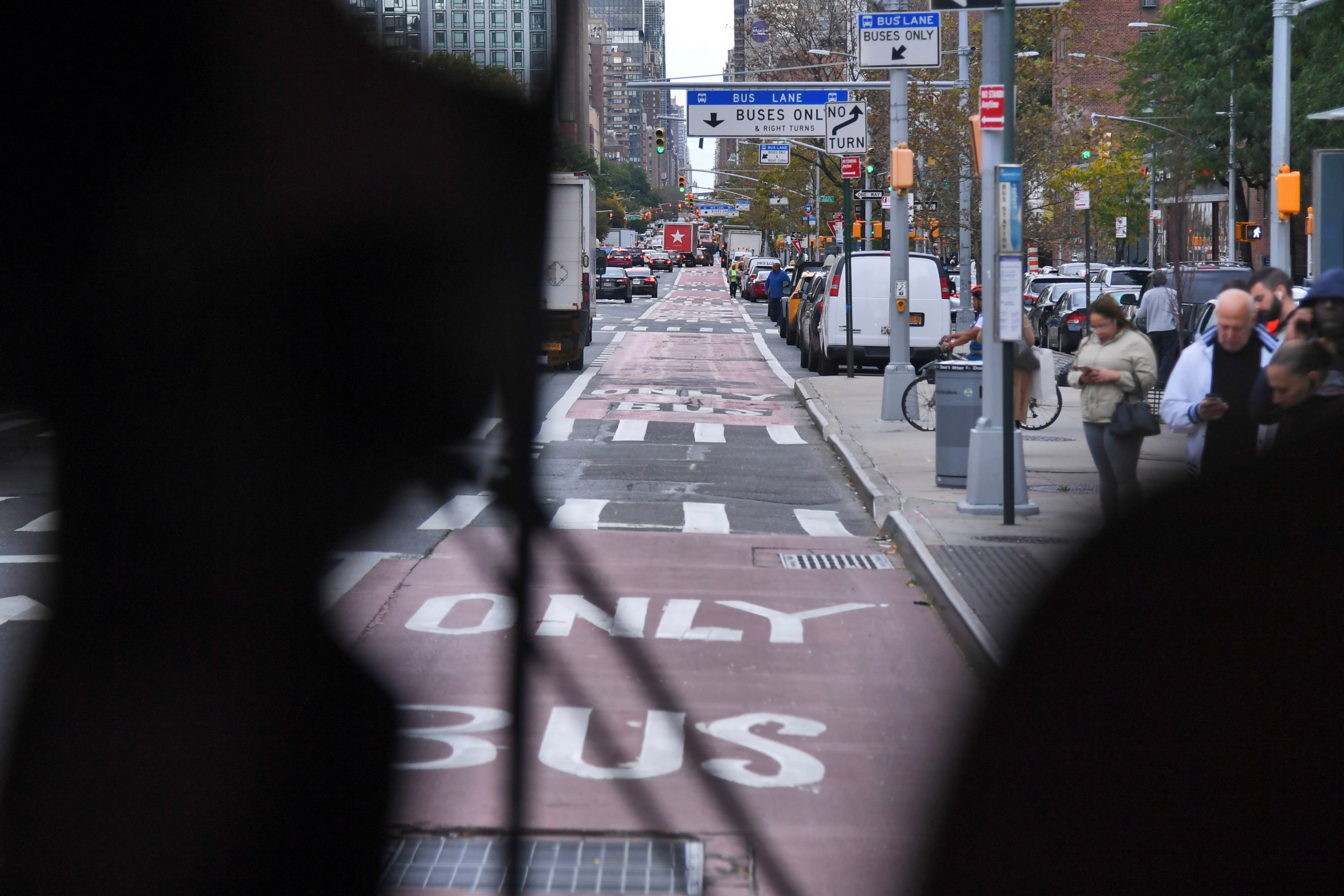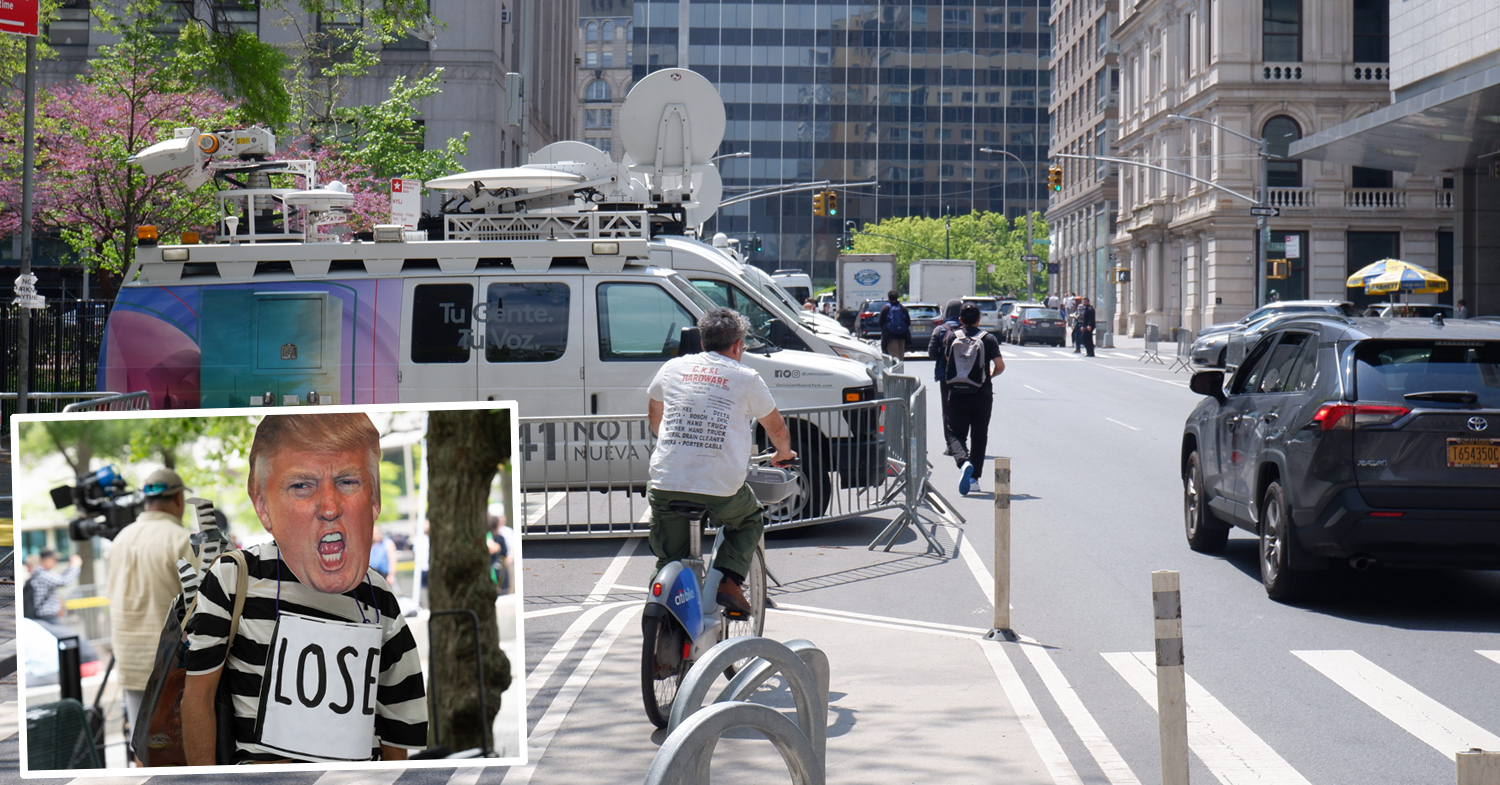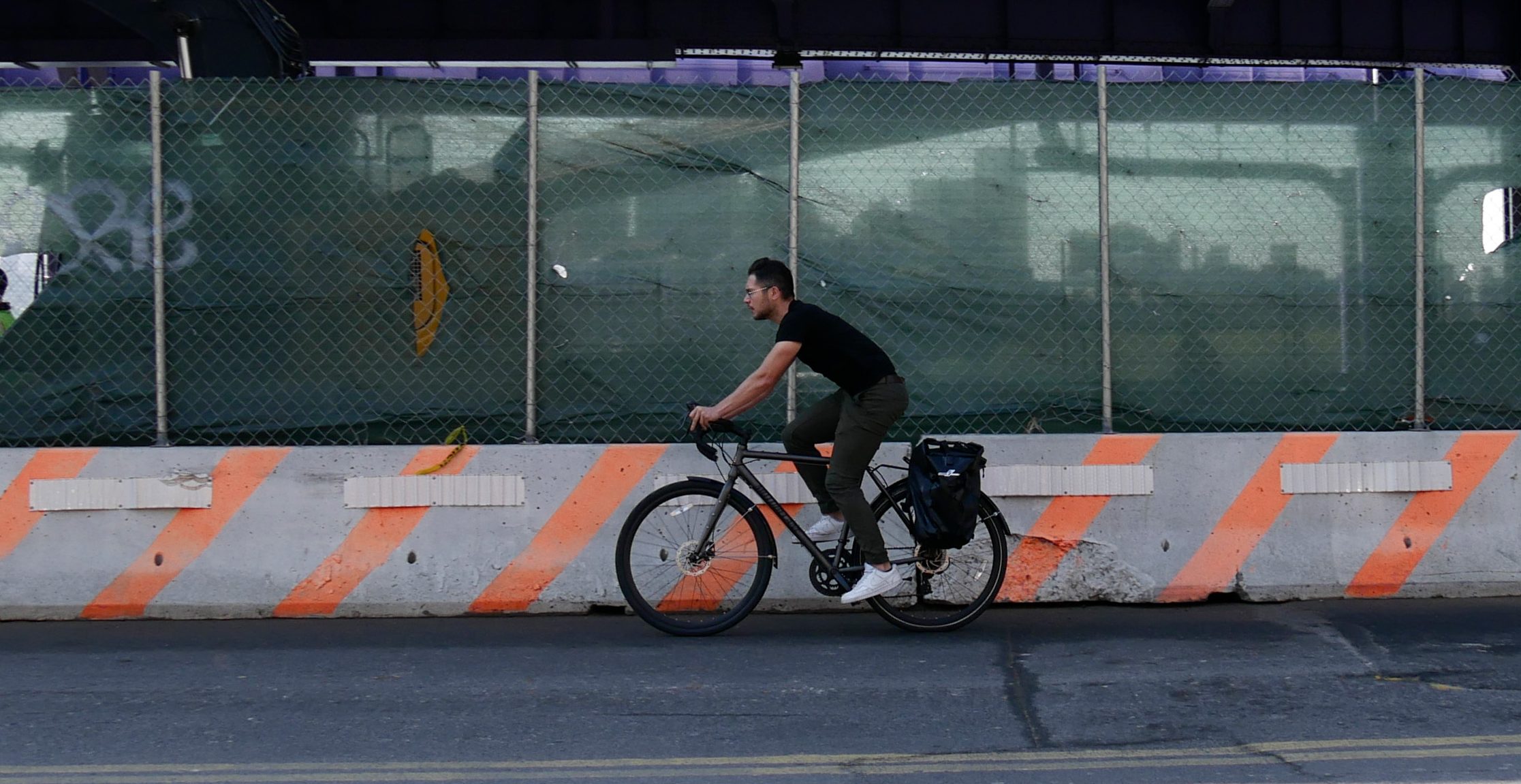
Fred Siegel of the Progressive Policy Institute moderated Sunday's debate.
On Sunday, Temple Beth Emeth in Ditmas Park, Brooklyn hosted a classic congestion pricing match-up: Michael O'Loughlin of the Campaign for New York's Future vs. Assemblyman Richard Brodsky (who, it turns out, went to shul at Beth Emeth until age ten).
The crowd of 50 could best be described as congestion pricing agnostics. An informal survey indicated that most take the subway to work (the temple is a short walk from the B and Q trains). They wanted proof that the plan would work as advertised, and based on the Q & A that followed the debate, they still need to be convinced.
The two opponents knew each other's talking points almost by heart. Each had rejoinders ready for nearly every argument and statistic thrown his way. When Brodsky claimed that his license plate rationing scheme would reduce more traffic than pricing, O'Loughlin effectively skewered the idea, using rhetoric usually reserved for the other side. "How do you tell someone who has to drive to the hospital that they can't, because they have the wrong license plate number?" he asked.
During the Q & A, the crowd asked pointed questions that probed deeper than the usual anti-pricing tirades. But as they moved the discussion away from broad pro-and-con arguments, and toward the nitty gritty specifics of the proposal now before the City Council, the Westchester Assemblyman who represents some of the wealthiest car commuters in the metropolitan region, pounced on every opportunity to raise doubts about whether congestion pricing would work as projected.
When someone asked how many pedestrian fatalities would be averted by pricing, for instance, it gave Brodsky a window to call the existing data into question and issue his familiar call for state environmental review.* When someone asked how much of the $8 fee would go towards enforcement and how much towards capital improvements, he played up the $125 million annual administration cost. O'Loughlin rebutted many of Brodsky's claims, but the Assemblyman tossed a lot of spaghetti against the wall and some of it stuck. He returned to one particular stat a few times -- "commuters are only 18 percent of the [congestion] load" -- implying that the congestion fee wouldn't affect the other 82 percent of trips very much.
A quick check of the facts shows that Brodsky's heavily repeated 18 percent figure is way off the mark. DOT Deputy Commissioner Bruce Schaller's February 2006 study, "Necessity or Choice" (download it) reported that "personal autos comprise an estimated 60 percent of vehicles with Central Business District destinations." A year later, Schaller's intercept surveys of 1,600 Manhattan motorists showed an even higher rate -- 74 percent of drivers approaching the bridges and tunnels in the Manhattan CBD between noon and 6 pm said they were making work-related trips (download it).
Though not everyone bought into Westchester Assemblyman's obfuscations, pricing skeptics weren't exactly won over either. They remained especially reluctant to believe that a dedicated funding stream for transit would not get raided for other purposes, with or without a lock box. One woman I spoke to after the Q & A, a regular subway rider, said, "I'm very dubious now... We don't know if it's going to work. I'm not convinced that traffic and air quality would be improved." Richard Brodsky: Mission Accomplished.
* In London, congestion charging has led to a net reduction of between 40 and 70 personal injury accidents per year and significant reductions in pedestrian injuries and fatalities inside the charging zone. For more detail, download the annual TfL monitoring report and check out page 70.





